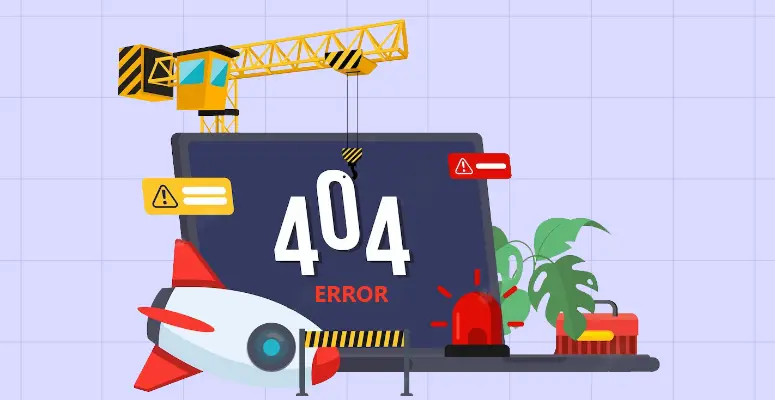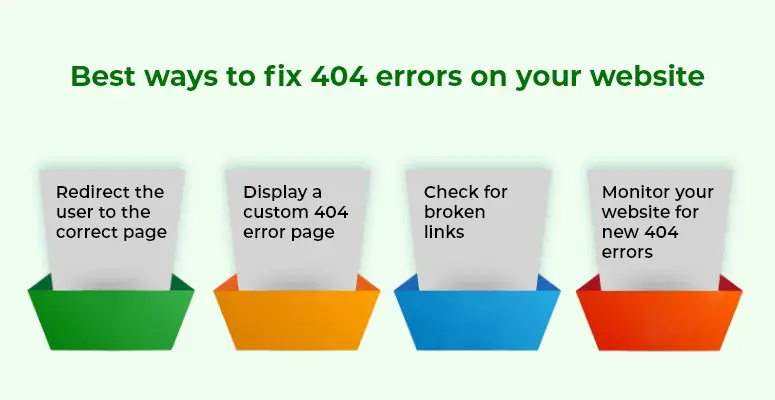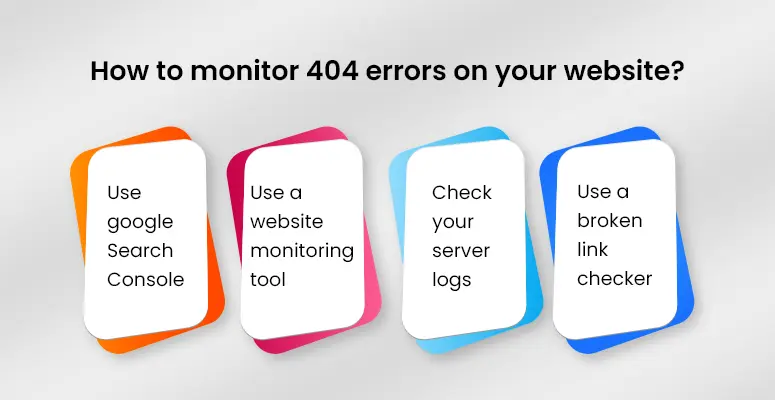Oftentimes, despite the webmaster’s best efforts some web pages are overlooked during a website redesign or not redirected to the old URL from this new link. A 404 error page will appears.
This Blogs contains a Brief Guide Of – What a 404 Error Is, How To Fix 404, Soft 404 Errors Explained, And Their Impact On SEO.
What is a 404 Error?
A 404 error is an HTTP status code that indicates that the requested resource could not be found on the server.
This can occur if the URL is typed incorrectly, the page has been removed or moved, or the server is experiencing technical difficulties.
When a user encounters a 404 error, they will typically see a message that says “404 Error” or “404 Not Found.”
This message is displayed in the user’s web browser, and it is usually accompanied by a message explaining that the requested resource could not be found.
What are Soft 404 Errors? How are they Different from Traditional 404 Errors?
A soft 404 error is an HTTP status code that indicates that the server returned a response to the client, but the response does not correspond to a real webpage.
Soft 404 errors are often used as a way to handle requests for non-existent pages, as they allow the server to return a response without actually showing a 404 error page.
Unlike a traditional 404 error, which typically indicates that the requested resource could not be found on the server, a soft 404 error does not give a clear indication to the user that the page does not exist.
This can create a confusing user experience, as the user may not understand why they are being shown a page that does not contain the expected content.
To avoid soft 404 errors, it’s important to properly handle requests for non-existent pages on your website.
Are 404 Errors Bad for SEO?
404 pages themselves are not necessarily bad for SEO, but they can have an impact on a website’s search engine rankings if they are not handled properly.
Having too many 404 pages on a website can create a poor user experience, which can lead to a higher bounce rate and lower overall engagement with the site.
This can in turn affect the website’s search engine rankings, as search engines use metrics such as bounce rate and engagement to determine the quality and relevance of a website’s content.
How to Fix 404 Errors on your Website
There are a few different ways to fix 404 errors on a website:
- Redirect the User to the Correct Page: If the URL of a page has changed, you can redirect users who try to access the old URL to the correct page.
This can be done using a 301 redirect, which is a permanent URL redirect that tells search engines to update their indexes with the new URL. - Display a Custom 404 Error Page: Instead of showing a default 404 error message, you can create a custom 404 error page that provides helpful information and links to other parts of the website. This can help improve the user experience and prevent users from leaving the site.
- Check for Broken Links: If you have a lot of 404 errors on your website, it’s possible that there are broken links on the site. You can use a tool like a broken link checker to identify and fix any broken links on your website.
- Monitor your Website for New 404 Errors: To prevent new 404 errors from appearing on your website, it’s important to monitor your website for new errors and fix them as soon as possible.
You can use a tool like Google Search Console to track 404 errors on your website and receive notifications when new errors are found.
How to Monitor 404 Errors on Your Website?
There are a few different ways to monitor your 404 errors on a website:
- Use Google Search Console: Google Search Console is a free tool that allows you to track and monitor your website’s performance on Google.
It includes a section specifically for 404 errors, where you can see a list of all the 404 errors on your website and the pages that are linking to them. You can also set up alerts to receive notifications when new 404 errors are found on your website. - Use a Website Monitoring Tool: There are many website monitoring tools that allow you to track 404 errors on your website in real time. These tools will typically send you an alert whenever a 404 error is encountered on your site, so you can quickly fix the issue.
- Check your Server Logs: Your server logs will typically include information about 404 errors that have occurred on your website. By regularly checking your server logs, you can identify any 404 errors and take action to fix them.
- Use a Broken Link Checker: A broken link checker is a tool that scans your website for broken links and displays a list of any errors it finds. By using a broken link checker, you can quickly identify and fix any 404 errors on your website.
Final Words
It is essential that you keep your webpages free from all server errors, this becomes more important when you are managing a large website.
The organic channel is the primary channel for all the brands, and thus a periodic audit on 404 errors becomes essential.
By regularly monitoring your website for 404 errors and taking action to fix them, you can help ensure that your website is free of errors and that users have a good experience on your site.
Published by
Divanshu
Divanshu is an engineer turned marketer. As SEO Manager, he is responsible for implementing strategies that help Scrapingdog to increase brand awareness, generate leads and acquire new customers. When he isn't working you'll find Divanshu reading, watching thriller shows, or playing online games.
All stories by Divanshu





